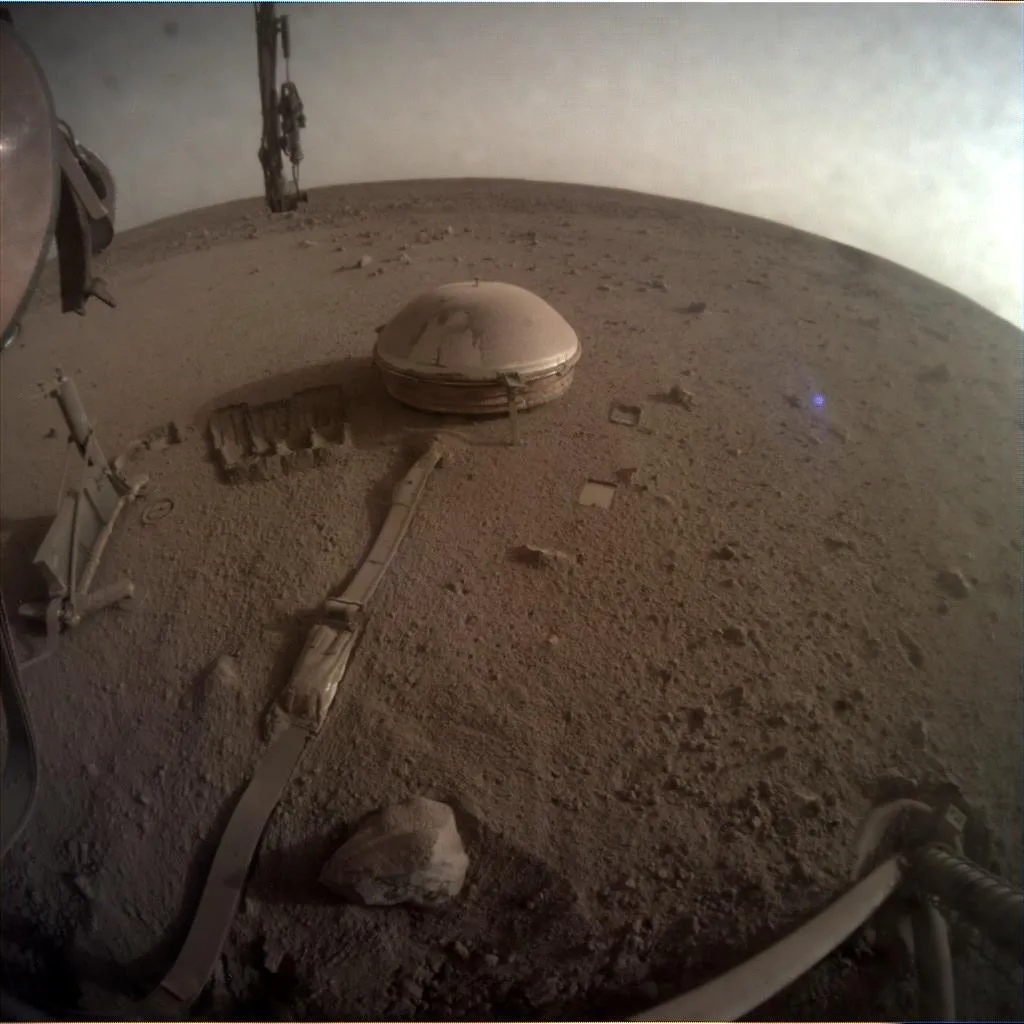Detections of seismic waves by NASA's InSight Mars lander have been used to determine the composition of the Red Planet's core.
The results mark the first ever direct observations of another planet's core, and show just how important the InSight data could be to scientists over the coming years.
On 25 August and 18 September 2021, two quakes occurred on the opposite side of Mars from where the InSight lander was situated, and these quakes have enabled planetary scientists to learn more about what's lurking beneath the Martian surface.

The location of the quakes was ideal, because the farther a quake happens from InSight, the deeper into the Martian subsurface the seismic waves travel before being detected.
And because the two quakes occurred after the InSight mission had already been operating for 2 Earth years, the team of scientists that studies seismic waves detected by InSight - known as the Marsquake Service - had built up a wealth of data and experience, giving them a greater advantage when it came to analysing the data.
As well as this, one of the impacts had been caused by a meteoroid impact and, according to NASA, impacts provide a precise location and more precise data for the scientists to work with.

"We needed both luck and skill to find, and then use, these quakes" says lead author Jessica Irving, an Earth scientist at the University of Bristol in the UK.
"Farside quakes are intrinsically harder to detect because a great deal of energy is lost or diverted away as seismic waves travel through the planet."
"These two farside quakes were among the larger ones heard by InSight," says Bruce Banerdt, InSight principal investigator at NASA’s Jet Propulsion Laboratory.
"If they hadn’t been so big, we couldn’t have detected them."
What occurred is something quite remarkable. The scientists were able to to detect and analyse seismic waves that had actually traveled through Mars's core.
The new paper, published on 24 April 2023 in the Proceedings of the National Academies of Sciences, finds that about a fifth of the Martian core is composed of elements such as sulphur, oxygen, carbon and hydrogen.

"Determining the amount of these elements in a planetary core is important for understanding the conditions in our Solar System when planets were forming and how these conditions affected the planets that formed," says paper co-author Doyeon Kim of ETH Zurich.
As well as revealing the secrets of Mars, data like this from the InSight mission could help planetary scientists learn more about how rocky worlds like Earth and our Moon form.
The InSight lander touched down on Mars in November 2018. After more than 4 years on the Red Planet, NASA declared the InSight mission officially retired in December 2022.
The last time InSight communicated with the team back on Earth was 15 December 2022.
Despite this, InSight leaves behind a treasure trove of data that will be analysed by planetary scientists for decades to come.
Read the full paper at www.pnas.org/doi/10.1073/pnas.2217090120.
